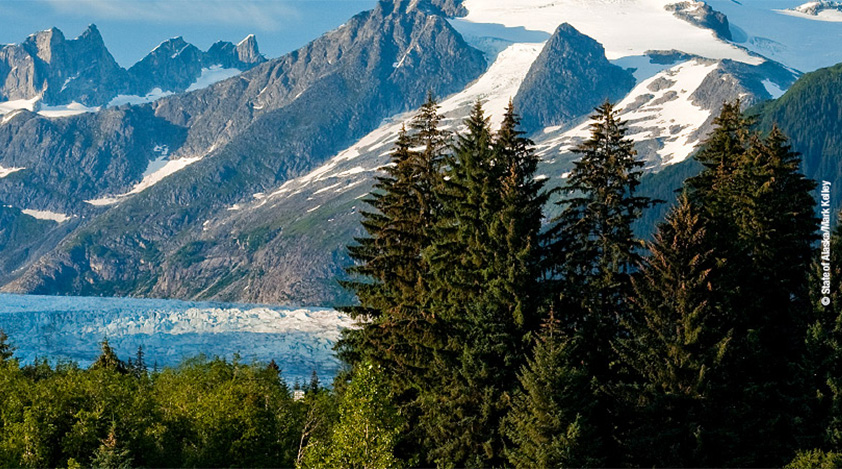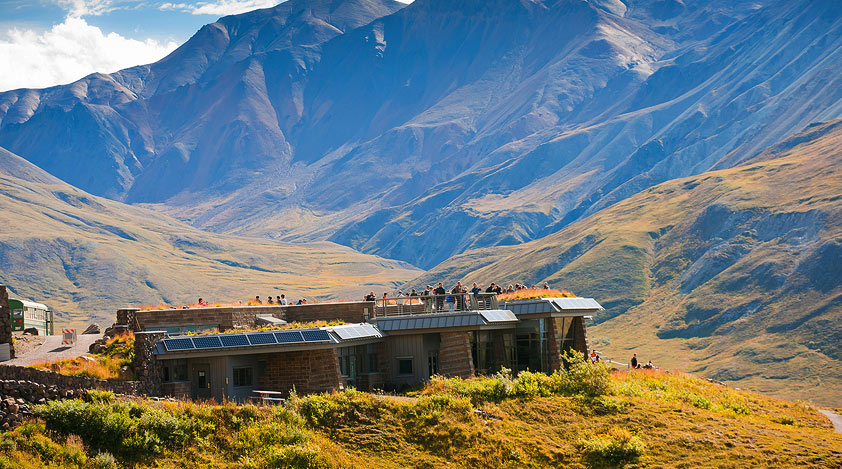Explore the different regions of Alaska

Posted by on 17 Mar 2021 , in North America
BARROW & FAR NORTH REGION
Located between two unforgiving settings, the Arctic Ocean to the north and the Brooks Range mountains to the south, Alaska’s North Slope is located in Alaska's Far North Region and is home to big polar bears and whales, even bigger oil fields and business, thousands of miles of barren tundra atop permafrost and a scattering of Alaska Native communities that balance subsistence living and modern American life.
When to visit
On the North Slope, the sun doesn’t set for around 80 days in the summer and doesn’t rise for nearly 70 days in the winter. It is so cold that the temperature stays below freezing for months.
FAIRBANKS & INTERIOR REGION
The largest city in the interior is Fairbanks, Alaska's second-largest city, in the Tanana Valley. The interior region has an estimated population of 113,154 Alaskan Athabaskans, native people of the Interior.
When to visit
Interior Alaska experiences extreme seasonal temperature variability. Winter temperatures in Fairbanks average −24 °C and summer temperatures average +17 °C.
On clear winter nights, the aurora borealis can often be seen dancing in the sky. Like all subarctic regions, the months from May to July in the summer have no night, only a twilight during the night hours. The months of November to January have little daylight. Fairbanks receives an average 21 hours of daylight between May and August each summer, and an average of less than four hours of daylight between November and January each winter.
Anchorage & Southcentral Region
Alaska’s largest city, Anchorage, is a popular visitor destination. Luxury hotels, fine cuisine and shopping are only minutes from state parks, and many historical sites. The view of the Chugach Mountains, Southcentral Alaska’s primary mountain range, greets visitors to Anchorage. Anchorage’s top two attractions are the Alaska Native Heritage Center and the Anchorage Museum. Outdoors enthusiasts can access dozens of trails from the Glen Alps and Prospect Heights entrances.
Southcentral Alaska has a variety of landscapes and climate zones. The region includes everything from coastal forests to mountain ranges, so while it might be relatively mild along the coast, there may be snow in the higher mountain passes.
From the serene waters of Cook Inlet to the exceptional natural wonders of the Chugach, Anchorage encompasses incredible adventures and metropolitan appeals that are larger than life. With 1,500 moose, incredible national parks and 60 glaciers nearby, it's a dream destination and the perfect gateway to explore the rest of the Country.
Paved highways accessible from Anchorage connect to places like Fairbanks, Valdez, the Kenai Peninsula, Denali National Park and Preserve and Wrangell-St. Elias National Park and Preserve. The Alaska Railroad’s main passenger depot is located in Anchorage as well and runs from Seward to Fairbanks.
The Kenai Fjords offer both rugged and untouched wilderness as well as reminders of the ice age with vast expanses of ice and the marine life abundant in this environment.
When to visit
Temperatures in Southcentral sometimes make it to 70°F during the summer, but generally plan on temperatures in the mid-60s during the day and 50s at night. Winter temperatures can sometimes snap to below 0°F for a few days or weeks, but wintertime highs are often in the 20s. Bring light layers and raingear for summer and a warm jacket for winter.
On the longest day of the year, the sun sets in Anchorage – Alaska’s largest city – at 11:42pm and rises five hours later. Winter solstice brings 5.5 hours of daylight, while moonlight lights up the snowy landscapes.
Juneau & Southeast Region
A tram carries visitors up Mount Roberts to an alpine area with hiking trails, wildflowers and views of Gastineau Channel. This is also the site of the Juneau Raptor Center, dedicated to local birds.
Southeast Alaska, colloquially referred to as the Alaska Panhandle or Alaskan Panhandle, is the southeastern portion of the country. The majority of Southeast Alaska's area is part of the Tongass National Forest, the United States' largest national forest and myriad large and small islands.
Juneau serves as the departure point for several wilderness attractions, including paddling paradises such as Glacier Bay National Park, Tracy Arm-Fords Terror Wilderness Area and Admiralty Island National Monument. The Mendenhall Glacier outside of Juneau measures over 12 miles in length, bringing in crowds of tourists with its massive size and extensive network of nature trails.
Whale watching and bear viewing are just one of possible activities you can enjoy here!
Wildlife includes brown and black bears, endemic alexander Archipelago wolfs packs, itka black-tailed deer, humpback whales, orcas, five species of salmon, bald eagles, harleguin ducks, scoters, and marbled murrelets.
If you are keen to discover more about Mine History, Juneau was built on gold and for many visitors that’s the most fascinating part of its history. Two of the Juneau area’s most successful historic mines were the Alaska-Juneau Mine, on the side of Mt Roberts, and the Treadwell Mine, across Gastineau Channel near Douglas. The forested ruins have been made into a historical trail.
When to visit
The best time to visit Juneau and Southeast Region is between May and August. Peak season for cruises and crowds at the area's top attractions, but the days will be long and sunny.
SOUTHWEST REGION
Part of the Pacific Ocean’s “Ring of Fire”, this region is dotted with volcanoes, home to Becharof and Izembek National Wildlife Refuges, Katmai National Park, McNeil River State Game Sanctuary, among many other natural splendours. Each year, dozens of rare bird species fly through Southwest Alaska on their migration route to summer in the Arctic. Moreover, don't miss the chance to see bears fishing for salmon at the top of a waterfall.
For more cultural discoveries visit Bethel, the hub of over forty Alaska Native villages on the Yukon-Kuskokwim Delta. Home of the largest rural community in Alaska with over 5,500 residents, still a marketplace for Eskimo ivory carvings, baskets and other craft items. The town’s Yupik Cultural Center features Native exhibits and demonstrations of dancing and carving.
When to visit
The tundra region to Alaska's Southwest has slightly warmer daily highs and about 18 hours of daylight in May, June and July. For these reasons, the best time to visit the region is surely during the summer, particularly in June and July.
Subscribe now for your chance to win
a $500 Travel Voucher
Be the first to hear about our new Holiday Packages

